How Is ITI Incorporating Technology Into Crane Operator Training?
How is technology being utilized to help crane operator trainees learn their craft? Industrial Training International, Inc. has incorporated simulator training into his crane operator training offerings.
“Tell me, and I forget. Teach me, and I may remember. Involve me, and I learn.”
Industrial Training International, Inc. (ITI) has taken the words of Benjamin Franklin to heart, especially with crane operation. To help with the education of the next generation of crane operators, ITI has evolved its courses to include virtual training. This is not meant to be a replacement for real-world training, but more of a precursor to real-world exposure.
In this episode of the Safety Factor podcast, Andrew Kauser, ITI’s Chief Product Officer and Senior Vice President of Simulated and Online Learning, and Adam Franz, Mazzella’s National Sales Manager, talk about some of the latest technological advancements in industrial training.
During this article, we’ll answer the following questions:
- How are virtual reality and augmented reality being used to improve industrial training for safety purposes?
- Is this training geared toward younger generations of workers?
- What’s it like being trained on the simulator?
- How does the VR training compare to real-world training on the actual equipment?
- What might operators experience in simulator training?
- Are certifications required to go from simulator training to real crane training?
- Where is crane simulator training being used?
How Are Virtual Reality and Augmented Reality Being Used to Improve Industrial Training for Safety Purposes?
ITI has been conducting training programs for the last 36 years. It’s all about making people safer and more productive at work.
What they’re finding is 90% of crane operation accidents are still human-error related. Unfortunately, these incidents cause serious injuries and fatalities. VR crane operator simulation allows operators to be put in an environment where they can learn how to operate the equipment, but in a safe way. Additionally, they experience what it’s like to operate cranes in all different environments with hazards. This is done in an environment that wouldn’t put them, or anyone else, in harm’s way.
This will help improve their muscle memory, and ultimately, their ability to work safely. VR, AR and simulation training are starting to take that experiential learning and make it so someone can be equipped with tools before they get into real-world settings.

Is This Training Geared Toward Younger Generations of Workers?
ITI has found younger generations are more adept to experiencing training and learning in a different modality. VR is a natural fit for them. It’s more like a video game. However, while younger generations embrace the technology, the more experienced workers are more resistant.
Often, the older generations will say, “I’ve operated a crane for 30 years. I’ll never use that. It doesn’t make sense.” However, as soon as they put the headset on and are immersed in the environment, you begin to see them really operate and behave as though they’re in the actual crane.
There’s a bit of a light switch that goes on because they realize training in this way can be immersive. It eliminates all the distractions and allows for repetition on lifts and activities that help hone your craft. You might not have that opportunity on the real piece of equipment because it’s in use. ITI is finding that although it’s much faster and easier for the younger generation, the older generation’s taking to it, as well.
What Is It Like Being in the Simulator?
ITI’s simulator has “married” technology with hardware that is representative of the OEM (original equipment manufacturers) controls. That’s important because you don’t want trainees learning how to simulate a crane with a joystick or Game Boy. They actually have to physically use the controls. That’s why ITI uses OEM parts from manufacturers or belly boxes and marries that with the simulation. It gives operators real-world experience, which is important for their overall success.
ITI calls these training sessions “Serious Games.” Their developers are gamers. They build games for a living, but they do it in a serious way. All simulations that ITI builds contains a specific crane. Additionally, the program contains nearly 250 scenarios, and they’re game-like. Every one of those scenarios has trainees:
- Pick up the load
- Move it
- Place it down
As the trainees progress, the scenarios get more complex and difficult. As you go through the scenarios, you get graded on your progress. Ultimately, that turns into a learning plan or path. At the end of the simulations, you get an indication of what you did wrong.
As the podcast was recorded, ITI referenced that “you can hear noise, you can hear other things going on while we’re conducting this discussion.” However, when you put on a headset, the current environment drops away. You’re now in a 3D world, and that world includes sound. It includes some tactile feedback, and suddenly, you forget where you are, and you think you’re in this new environment.”
That’s what’s real about the training modality. It puts you in a place where you get to experience what it’s like being 300’ up on a wind farm or being in a tower crane looking down. It actually weeds people out from jobs sometimes because they realize, “Oh no, I’ve got a fear of heights. This is not for me.”
How Are Simulators and VR Being Used to Recruit Younger Workers?
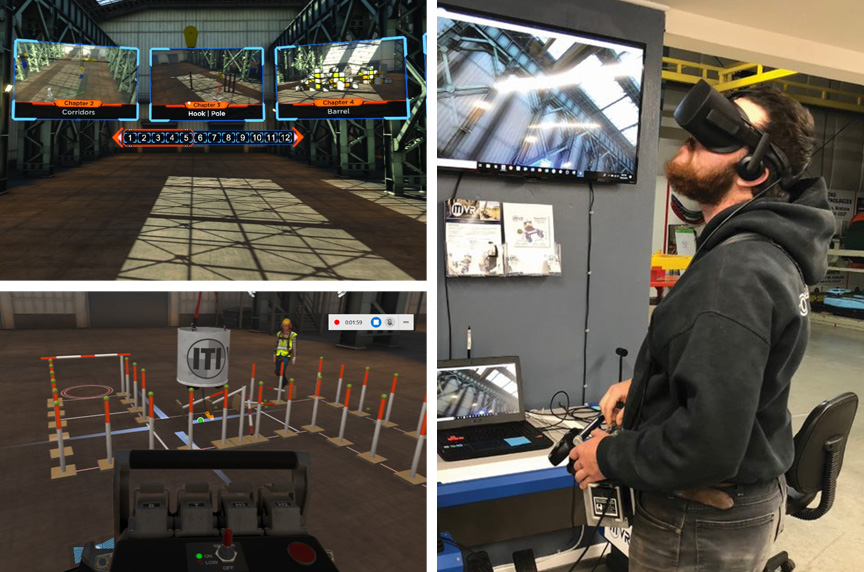
What ITI and Mazzella have seen is that in some instances, customers are taking these simulators to schools. They’re getting students that may not be destined for four-year universities to actually spend a little time in the crane simulator and realize, “Wow, this is interesting. I might want to do this as a career.” It gives that exposure to somebody that otherwise, might not give much thought to joining the lifting and rigging industry.
This type of exposure has a two-for-one benefit. It opens up younger generations to career possibilities, and it doesn’t require the use of actual crane equipment. Rather than handing you the controls to a $5 million piece of equipment, you gain practical experience on the simulator.
There’s a lot of opportunities for young students to become engaged in the lifting and rigging industry. That’s really going to help drive the industry as a youth influx is needed to set up the business for success.
The best part about the program is it’s not limited solely to crane operation. It can be for the following fields, too:
- Crane inspector
- Crane service technician
You can learn how to do a job in a simulated way before you actually have to put your hands on the equipment. Certainly, real-world experience is involved, but simulation can get you pretty far down the road in terms of muscle memory, tool selection, the right procedures to follow before you even get in front of the actual piece of equipment.
How Does VR Training Compare to Real-World Training on the Actual Cranes?
There have been a number of studies comparing the types of training and weighing the costs and benefits.
ITI’s crane simulator program is supported by the National Commission for the Certification of Crane Operators (NCCCO) Foundation to do a study with them. Basically, they did a study comparing ITI’s simulators and a virtual crane simulation to an NCCCO practical exam. The NCCCO had individuals go through both, and found ITI was 95% accurate on the simulator being able to predict whether somebody could pass or fail the real-world example. That was just an out-of-the-box simulator that was used in the study. Had there been more time to fine-tune the training, ITI feels they could have gotten close to 100%.
In terms of efficacy, ITI has found there’s probably an even balance between instructor-led training and doing simulation that gives you basically the same capabilities. What some studies have shown is that somebody who spends time in simulation builds that muscle memory and experiences situations they may not experience on a real-life crane.
What Might Operators Experience in Simulator Training?
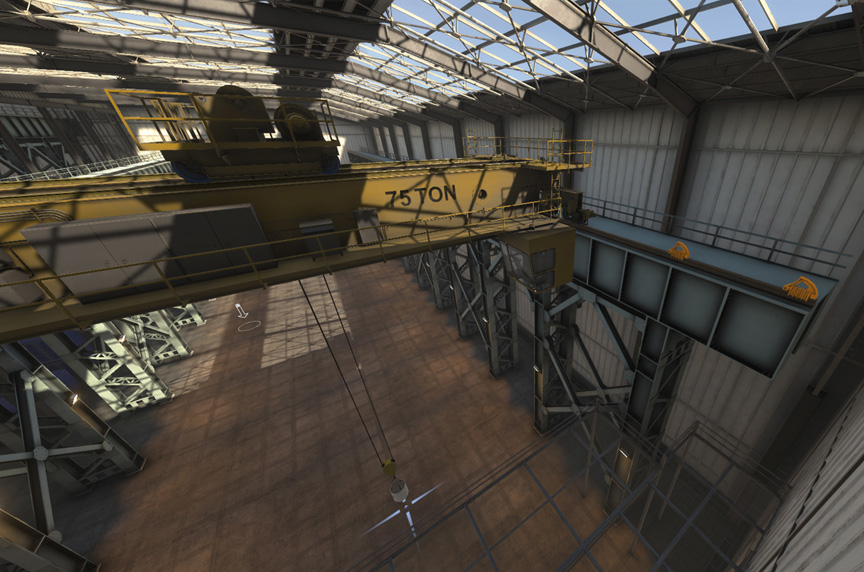
It doesn’t have to be crane simulator. It could be training for handling fall protection, blood-borne pathogens, or an AED (Automated External Defibrillator).
If you’ve gone through a course and learn how to use an AED on somebody who’s fallen and needs to be revived, you may have limited hands-on time with the equipment. However, with multiple simulators, you’ll simulate that exact same activity. You can actually be involved in making sure you apply the machine properly to revive the person.
Studies have shown anybody who’s been through simulation training is 2.75 times more likely to act in a real-world situation than somebody who’s just learned it in a class and didn’t really spend a lot of time doing it. That’s one reason why companies are ensuring operators and riggers are trained using the technology and preparing for real-world scenarios.
Where Is Crane Simulator Training Being Used?
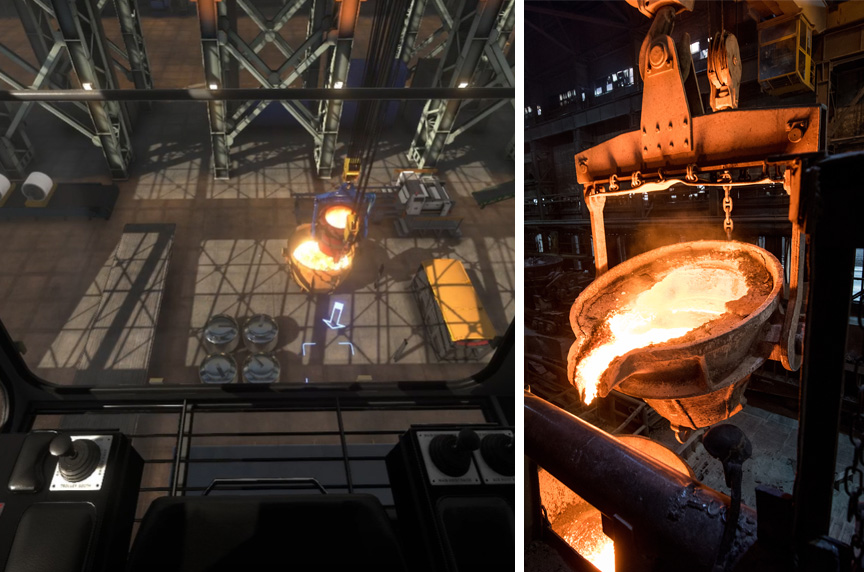
Companies willing to invest in these simulators and creative solutions to get training often are process equipment facilities. These are paper mill or steel mill cranes that are running 24 / 7.
By getting or leasing a simulator, the total cost of ownership isn’t creating downtime in the shipping bay or on the melt shop crane. You’re not waiting to have the down day or downtime to train new employees. You were able to get them part of the way there before putting them in the cab. Depending on their progress on the simulator, you can say whether or not they’re qualified to operate your overhead crane
How Does a Simulator Improve Accessibility to Training?
ITI’s crane simulators are high fidelity, and typically, require hardware. They’re not at the point where you can just have the headset and use your joysticks. That won’t give you the real-world feel of operating a crane or holding a belly box.
ITI has gone down the road of virtualizing pendants. They have a pendant-controlled overhead crane, and it’s a virtual pendant. In that case, all you need is the headset and the paddles. The simulators are getting to the point where they’re more accessible, and therefore, could be available to a broader market like schools, which don’t require the hardware.
How Is Technology Impacting the Workforce, Addressing Fatalities and Injuries?
Before the outbreak of Covid-19, there was a lot of resistance to technology. You had the older generation saying, “I’ll never learn in this way.” However, there was a switch when suddenly, the world locked down and people needed to learn remotely. Virtual training provided that option when in-person sessions were not permitted.
Now, there’s a healthy interest in how this technology can help us improve training. ITI isn’t suggesting instructor-led training is going away, or shouldn’t happen. It should. However, there are elements at can be supported by and improved upon with simulation. Actually, it lessens the load on an instructor because they can have their individuals go through these activities. During these sessions, the computer consistently grades them and tells them what they did wrong. That gets your workers valuable practice time with real feedback for improvement.
ITI isn’t saying one system is the be-all-end-all for training. Instead, they believe the proper learning plan would include a combination of:
- Instructor-led training
- A lot of e-learning
- Some simulator time
- Qualification on the equipment in the real world
This creates a pathway of reinforced learning.
What Industries Are Starting to Implement Technology-Based Training?
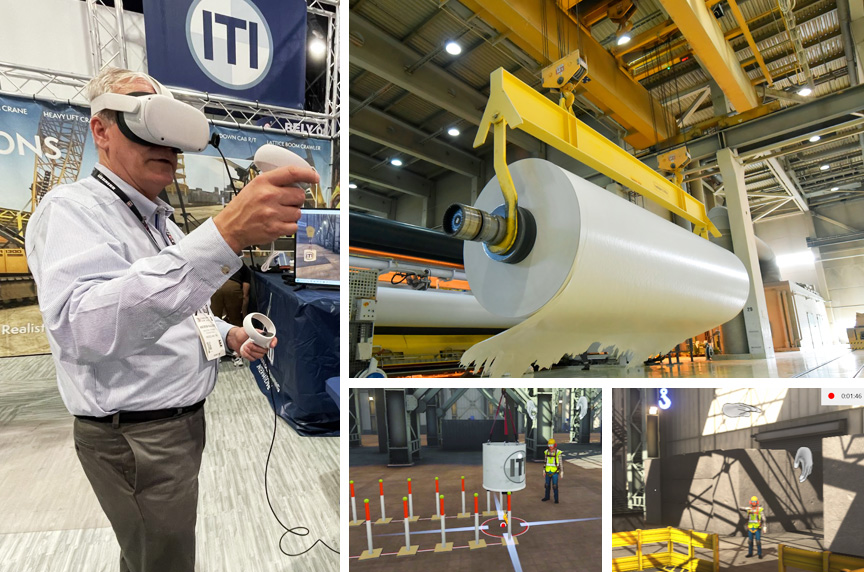
ASME B30 states, “You must be qualified.” Well, how are you going to be qualified? What are you doing to qualify an employee? There are people that embody a safety culture to ensure they put their team members on a learning journey to achieve success.
Since ITI instituted simulators into their training, they have seen interest from many industries.
They’ve seen a lot of success in steel. Also, there are other production environments where you can’t utilize the crane for training, and they still need to onboard and find good operators. In any industries where there’s safety concerns, high demand for talent and equipment scarcity have created an opportunity to embrace technology. There are segments that really value the culture of training. It’s not like just you walk in the lobby, and say, “Oh yeah, we promote safety.” If you’re going down a learning journey of safety, you embody safety as part of your core values. You have to walk the talk that you’re a safety-based culture. Companies that have simulators are truly invested in their training and safety.
How Will Classrooms of the Future Look?
ITI has had the luxury of being able to see some interesting technology, especially around simulation, and utilizing it to deliver training. There are opportunities, even on the instructor-led training side, to use technology more.
Some of the barriers for an instructor-led training organization is the number of instructors you have, distance getting individuals into a classroom, travel, and logistics. Technology can solve a lot of those logistical issues. Now, you can put people from different environments into the same room. This can be done using an iPhone to scan a room and have a digital twin that trainees could be sitting in virtually. Trainees could be in different parts of the world and attending the same training without sitting in the same room.
In this scenario, you’ve got an instructor in the room and a virtual piece of equipment. Along with the instructor, the trainees are looking at it together. They’re taking out their multimeters and testing despite being in multiple locations.
In 10 years, there could be a situation where trainees learn how to do more with less. That means more technology. That dovetails into more automation, which means more training. Ultimately, that helps with your business efficiencies. Your limited resource is that in-person trainer. Now, that person doesn’t have to be on a plane coming to see you when they could be on a virtual call within minutes.
How Will Technology Be Used to Address Skill Gaps in Workers?
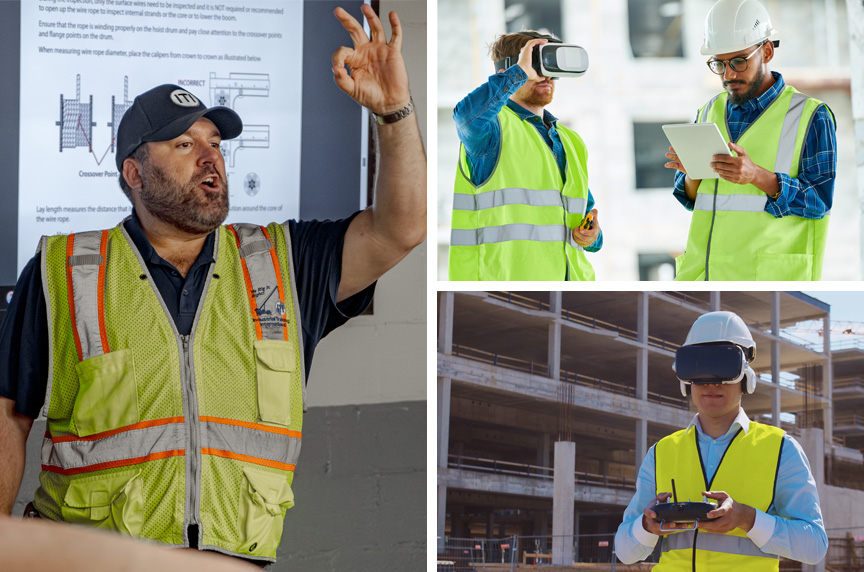
Companies have developed an understanding that there’s a massive skills gap and issues associated with expansion. This is because of not having enough people in the right roles doing the jobs. When you have to onboard them, you’ve got to do so efficiently.
There are organizations that are very good at finding and sourcing talent for workers that have the right capabilities. However, after acquiring the talent, they’ve got to be trained. Companies have realized the way to train workers has changed. It’s no longer just bringing everybody into one place and do it in the classroom. There’s a path to learning that you can create with virtual instruction. You might even have an instructor using a Zoom-like capability to do some mentoring and facilitation. After that virtual training, you can have trainees attend hands-on capstone events in person with simulation being weaved in throughout that entire process.
What you’d be doing is shortening the time from them coming in fresh to being a productive employee. Those are the results everyone’s looking for. More organizations are looking at that because the barrier to growth right now is having the right skilled workers, especially with retirements and employee turnover. In order to maximize production, you’ve got to get new employees up and running as quickly as possible. Time is money on construction sites, as well as manufacturing.
What Are Companies Doing to Address the Cost of Industrial Training?
Actually, the cost of simulation, from a technological standpoint, is getting more efficient.
The price point on headsets is coming down significantly. From a cost point, instructor-led training for 375 students is about the same as e-learning for 2,000 students. It’s really not as expensive as it used to be. The real barrier is getting the technology into the field, and having it managed by the end-user.
How Is Mazzella Working to Make Overhead Lifting Safer?
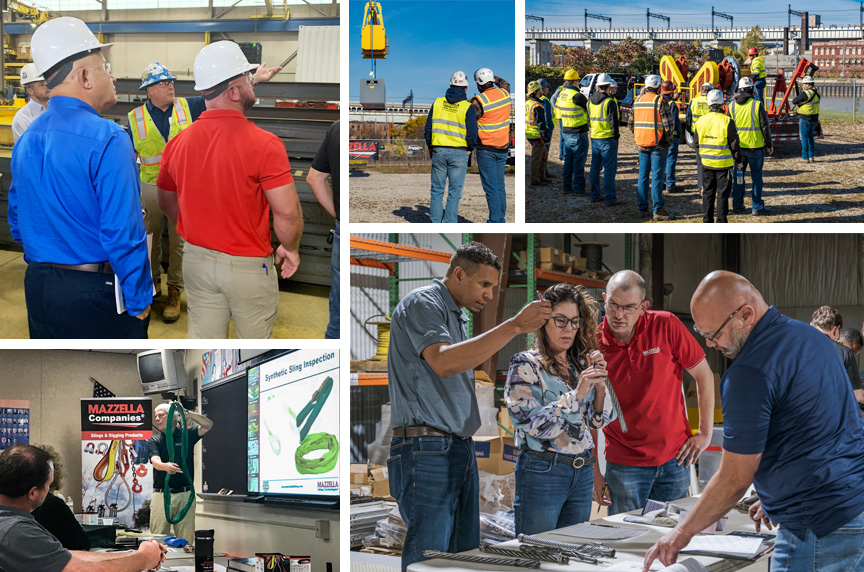
At Mazzella, we have diverse product and service offerings to meet customer needs. This means no day is the same, which allows you to experience unique opportunities all the time. Plus, you have the opportunity to keep world economies not only going, but growing.
Rigging Training
If you require a specific training course for OSHA (the Occupational Safety and Health Administration) compliance for slings, hoists and / or rigging hardware, Mazzella can assist you in creating a safe and reliable workplace.
Our rigging training focuses on:
- Overhead cranes
- Below-the-hook lifters
- Lifting slings
- Rigging hardware
- Wire rope
All Mazzella trainers have been accredited by our company through training by a third-party company (ITI), Mazzella Companies’ internal Train-the-Trainer program, and are trained on OSHA and ASME standards.
Apprenticeship Program
Any services we perform at Mazzella can be done better by someone who’s been part of the crane business. With Mazzella’s diversified portfolio of business units, Crane Service Apprenticeship program graduates can advance into any of the following fields:
- Rigging Inspections
- Warehouse Solutions
- Crane Ropes
- Sling Repair
- Below-The-Hook Lifting Devices
- Fall Protection
- Overhead Crane and Hoist Repair
- Lifting and Rigging Training
- Crane Upgrades and Modernizations
Individually, you could advance your career and become a:
- Service Technician
- Inspector
- Project Managers for Engineered Products / Modernizations
- New Equipment Installer
- Process Equipment Technician
- Modernization Technician
- Service Coordinator
- Service Writer
- Service Manager
- Administrative Manager
- Branch Service Manager
- Regional Service Manager
- And many others…
What we’ve found is when you learn everything from the ground up, and you advance in your career, it all comes together. You’ll be able to make better decisions because you can see where the inefficiencies are and correct them.
Click here to visit our Careers Page, or here to watch our Advancing Careers channel!

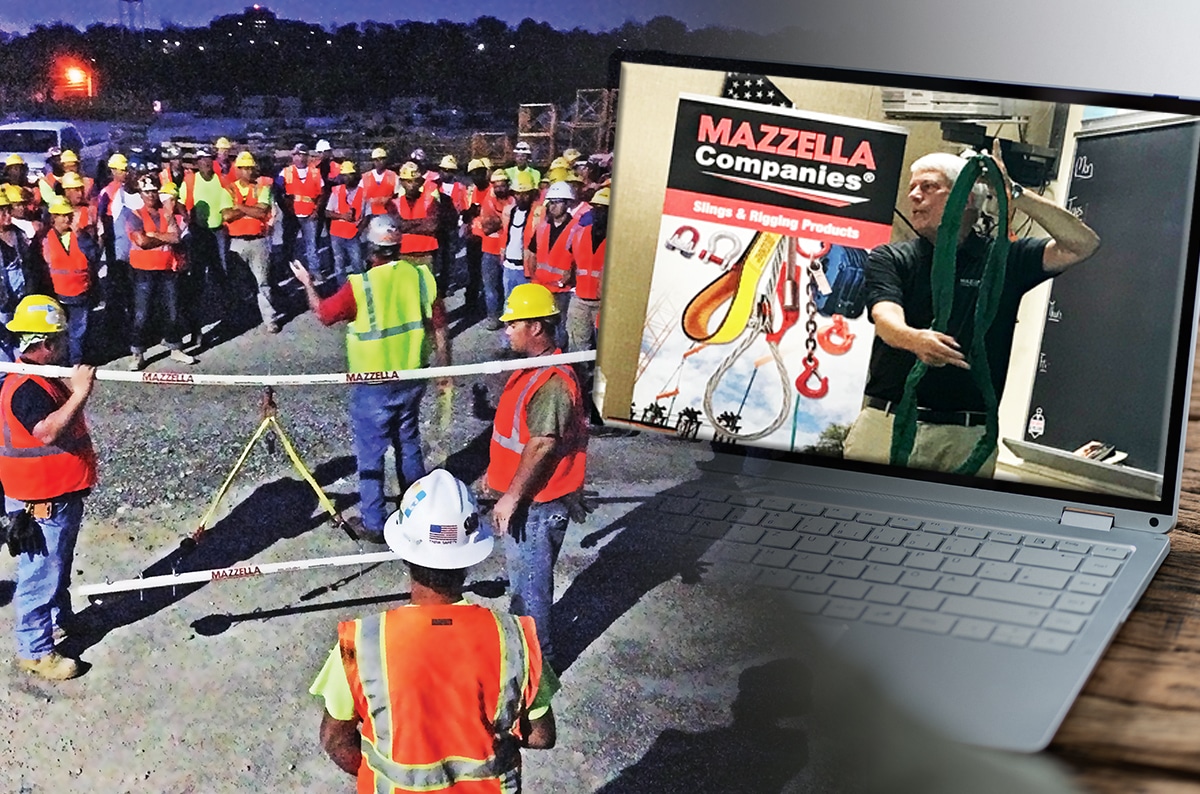
Lifting & Rigging Training
If you require a specific training course for OSHA compliance, Mazzella can assist you in creating a safe and reliable workplace. We qualify our trainers by requiring them to complete an internal train the trainer program (which trains to applicable OSHA and ASME standards and training technique), extensive field experience, and additional training from third-party entities, such as Crosby, CM, Harrington, Gorbel, and Industrial Training International (ITI).
Copyright 2023. Mazzella Companies.
